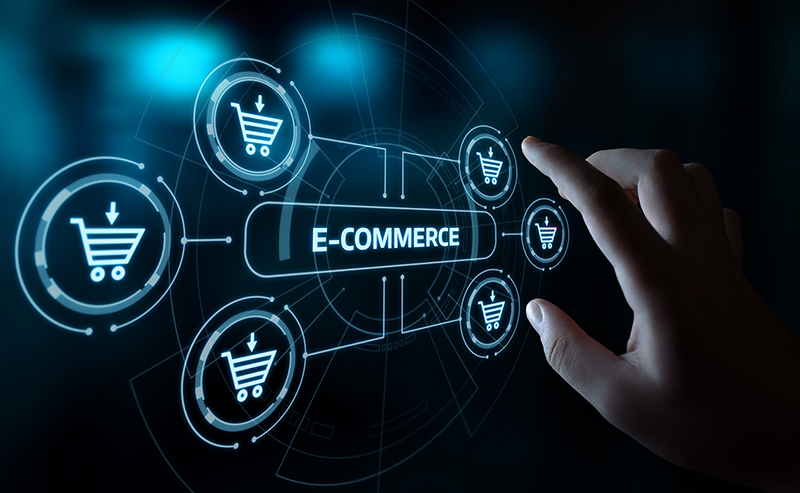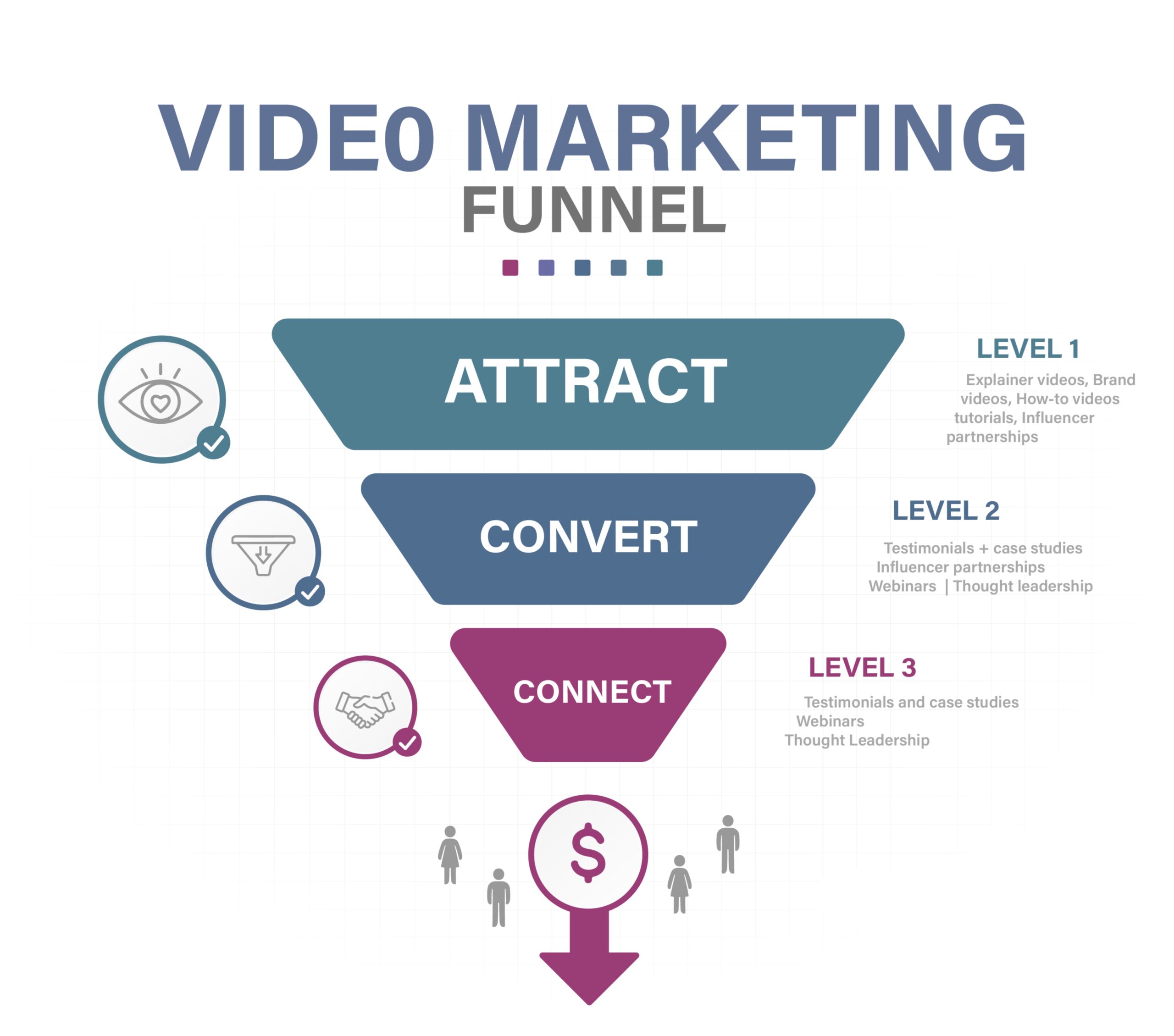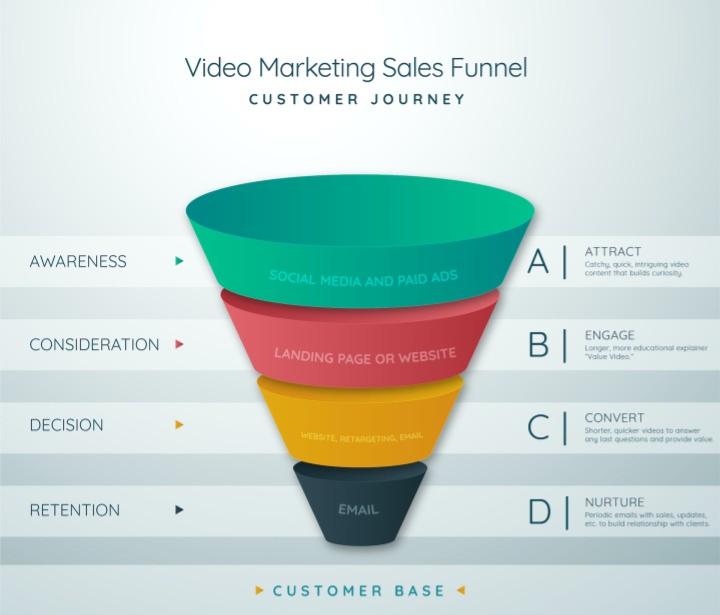At POW, we love ecommerce! I’m about to show you how Boom manged to generate $1,422,500 in revenue between 1st Jan 2016 and 31st January 2016. On Facebook & Instagram $429,014 was spent.

Interestingly, of the $429,000 that was spent, just $22,000 went on Instgram.

In order to slow down growth (to protect the supply chain) Pinterest was shut down
in November. So $ 0 was the January spend.
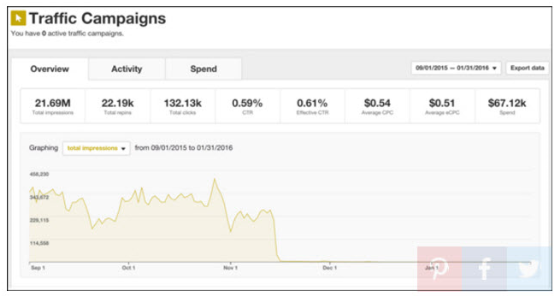
After spending $5,242.70 on Google, they had to cut down in November but were still left with a few campaigns running on which BOOM had to spend in January.

Here’s a breakdown of their ad spend from Jaunary:

- Total ad spend: $434,256.72
- Total revenue generated: $1,422,500.15
- Total initial profit before ad spend: $810,825.08
- Total initial profit after ad spend: $376,568.36

The $1,430,007.92 revenue shown by Shopify is $8,000 higher than the Google Analytics.
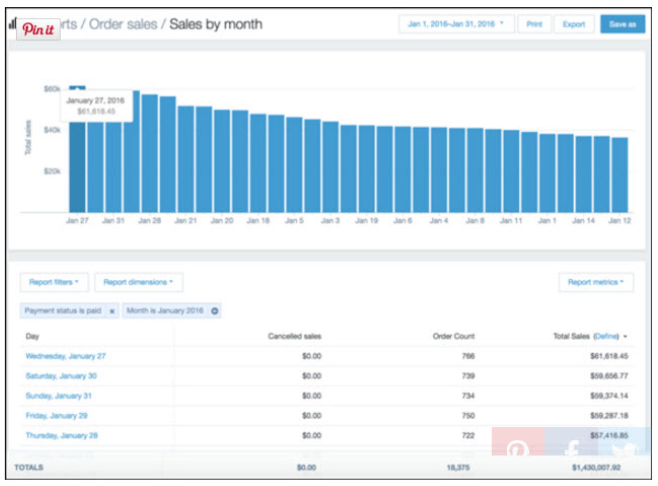
We have a few companies as clients that make multiple 7 figures a year, but this BOOM example is on a whole another level.
Let me break it down for you.
BOOM is a cosmetic and skin care company that focuses on pro-age cosmetic line. They created Boom ByCindyJoseph.com to sell their products and increase awareness of the “Pro-Age” Revolution.
This lead to a movement focused on shifting the whole anti-age perspective of our society to a pro-age perspective… and the response was incredible.
Women of all ages, especially those who are identified as “Baby Boomers”, gave them an incredible response.
POW has been building e-commerce websites for the last 20 years, so we know what works.
To draw your attention towards e-commerce, there are 3 key areas that are the main focus of this blog post:
1. Generating visibility
2. Creating conversions
3. Engaging customers in a conversation that turns them into ongoing repeating customers.
P.S this is the top secret “secret sauce” if you’re curious, by the way: traffic and conversion are great for sure… but what really kicks a business into high gear is repeat business.
BUT WAIT!!!
Wondering how you too can generate $1 million a month?
Well then you’re at the place….
This Blog post & article will help you understand the exact Ad campaigns, sales funnels & the exact engagement sequences that were used by BOOM to make $1 million a month. Nice huh?
Better yet….
You can then use these in your own business.
Ok… so without further ado
Let’s get started.
THE BIG 4 Pillars of A Successful ECommerce
The first thing we really need to focus on is “Traffic”
Most people do not have enough visitors on their website.
But don’t worry! We’ll fix that first.
The most common cause is that most people don’t have a consistent and scalable visibility source in place for their business.
When attempting to generate visibility (i.e. buying traffic), there are 3 problems that you face. We’ll discuss those in detail, but first let’s take a look at the traffic generation and internet marketing landscape.
The first thing you need to know is “query based” traffic sources which means that people tend to type in a search item and then relevant results are shown to them based on their search (query).
This way, you get to know (as an advisor) what the other person is searching for and you can show them a relevant offer.
Next, we are going to talk about contextual advertising where you choose your targeted audience on the basis of your ads context.
In the last 10 years, multi-data point contextual advertising has enabled business owners to reach highly targeted customers very easily. Before this, you only had one data point on each person but now you have access to thousands of data points on every person. So, it becomes easier to identify the audience that will be the most receptive to your content and offers.
The demographic data points available to us are:
- Age range
- Gender
- Ethnicity
- Relationship status
- Housing status
Along with behavioral and interest data points like past purchase history.
The Big 4, as mentioned earlier, is the best place to get this information and reach out to your potential audience.
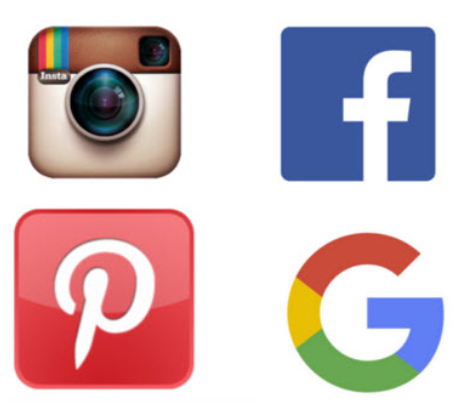
- Google (Google Search, Google Shopping, Youtube, Google Display Network and more) offers both query-based and contextual targeting.
- Facebook offers contextual targeting.
- Instagram (owned by Facebook) offers contextual targeting
- Pinterest offers a combination of query-based and contextual targeting
Other than the Big 4, there are some more channels from where you can buy visibility like Amazon, shopping engines, Twitter, LinkedIn Outbrain, Taboola and more.
Although, you can buy visibility from all the mentioned channels but BIG 4 stands out as atleast one of the four would always have the potential to be your main traffic source.
NOTE: Always have more than one source of visibility.
Wondering why we said this? Well, POW has seen that if you are 100% dependant on a single source, you are putting yourself ar risk.
When BOOM got into e-commerce, drop-shipping was the the name of the game and organic traffic (via Google SEO) ruled supreme.
Later, Google realeased a series of updates and made it very difficult for people to play around with their algorithm and manipulate the organic search rankings of web pages.
This had a massive impact on half of the business owners as their single source visibility was not there anymore.
Amazon has been crowned as the king of the traffic jungle but many business owners are doing the same mistake by just depending on a single source i.e. Amazon.
Getting worried? Here’s a good news
It gets a lot more easier to get more sources once you get the first sources of visibility working.
Now, you know the inside of the traffic world.
At POW, we have identified the main problems that keep traffic buyers from being profitable.
Let’s discuss these problems.
Big 4 Traffic Problem # 1: Targeting Too Broadly
Putting your message in front of people who are not interested is just useless.
It is very critical to be specific when targeting your audience. Due to so many options and data points, there is a high probability that you are choosing audiences that are too general.
SPECIFIC TARGETING IS THE KEY.
If you look closely, it is similar to an archer focusing in on the bullseye. He doesn’t care what’s around that bullseye and how you can aim for a very specific audience and get the most highly-leveraged results and profits.
Now, here a thing, your targeted audience is not going to be outlines for you in red paint so you need to test a lot of interests, groups and behaviours to identify and decide your potential audience.
Big 4 Traffic Problem # 2: Selling The Click
Just targeting the right people might not be enough to hold their attention and consume the content of your ad.
One cool trick that POW suggests to do is to use THE RULE OF UPPER AND LOWER THIRDS. These are actually lines of text that we ad over the image to put some additional information.
Remember that on some networks, like Facebook and Instagram, your text must not take up more than 20% of the image.
Over the years, POW has found that the advertisements that contain a face tend to perform better so it is always good to use faces in your ads.
Another cool tactic is to “Cartoon-ize” your ads. This would be like a cherry on the cake.
For Example, you can have a person’s face, drawn as a cartoon, along with a lower third of a text.

So, your sole purpose must be to grab the attention of your targeted audience but not to the extent where the ad is no longer relevant to what you are offering.
It is important important to ensure that your ad and image relate to what you have for them on the landing page. This is known as Ad Scent.
Big 4 Traffic Problem # 3: Post Click Engagement
By now, you have targeted your potential audience and they have clicked on your ad.
SO FAR, SO GOOD.
Now, you have to convince them to actually do business with you.

E-commerce works in a flow and you need a YES at every step to keep it going.
An example of this flow is like;
“Yes, I will view your product and read the description; Yes, I will add it to my cart; Yes, I will continue to billing,” and so on… until you’ve made your sale.
This is where the “Sales Funnel” comes in handy which is a term used in e-commerce for a series of web pages that you send people through in a specific order to get a specific response.
Didn’t get that? No problem.
Simply, a sales funnel is a sequence of engagements designed to get people to say yes to your offer.
There are multiple ways to use the sales funnel effectively but you need to get at leazt one to work.
The purpose of this first funnel is to take your audience from a traffic source, engage them in a relevant conversation, and hold their attention long enough for them to become a customer. You can add more, once you have your first sales funnel up and running.
Over the years, POW has used countless sales funnels but there is one specific model that works for every business and market.
It is also the core acquisition model used by BOOM.
Even their $1 million a month Shopify store uses the same funnel and 95% of their paid visibility goes through this funnel.
The Dipsy Doodle and The Don Daliber
Here’s what it looks like:
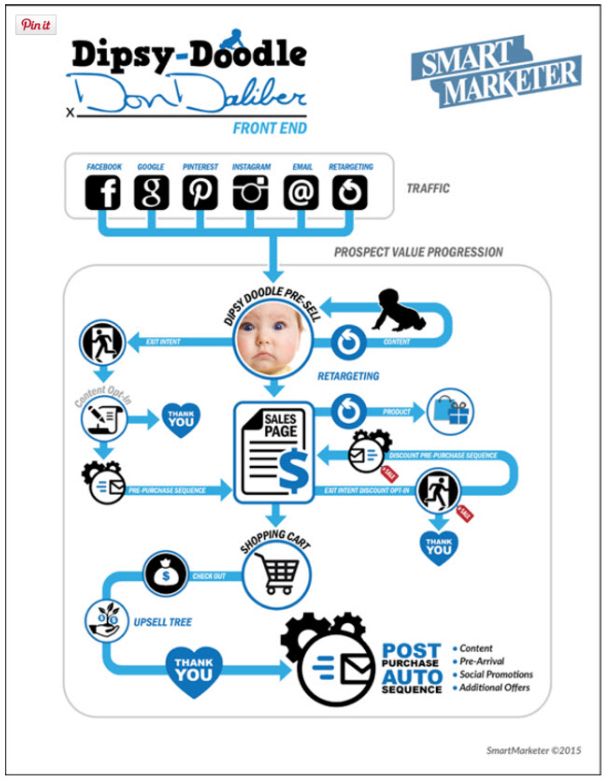
This is different from the traditional query-based advertising as it does not send people directly to an offer page or product page.
This is really helpful when you need to add a step before you get your audience to your offer.
We call this step a DIPSY DOODLE page.
For more understanding, it is actually a written article or a video that engages your audience and discuss a relevant problem with them. You then sum up your video or article with a suggestion or solution which happens to be your own product.
Sounds interesting. Doesn’t it?
It is also good to know that instead of you, chasing people and saying, “hey, buy my stuff”, you engage them with your content saying, “hey, look at this cool article.” So, people end up chasing you and your product.
Here’s an overview:
- People get interested in the article or video.
- They consume the content.
- The content suggests your product.
- They click on the lick.
- They end up on your sales page.

Want to know how BOOM does it?
Their target audience are women (generally 45+ and in America) with articles on Facebook, Google, Pinterest, etc.
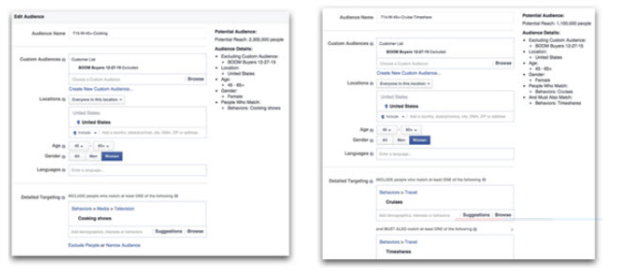
Here’s an example of the ad creative that BOOM uses:

When the prospect clicks on their ad, they land on their website page title, “5 Makeup Tips For Older Women By Makeup Artist Turned Super Model Cindy Joseph.”
This is their Dipsy Doodle pre-sell page.
This is how they engage their audience in a conversation by discussing a topic they find interesting and eventually ending the article with a solution i.e. their product.

BOOM has a few more interesting things happening on this page.
First, they use exit intent software (also know as on site retargetting) called Opti-Monk to make an offer to the people who land on the page and attempt to without looking at their offer.
There is another tactic that they use to collect the email addresses of potentially interested visitors so to follow up and make an offer at a later date. This is called a Lead Magnet that pops up if someone lands on the page and attempts to scroll out of the window.
Here’s what that looks like, when it pops up:

And Here’s how it looks, after you’ve submitted your email:
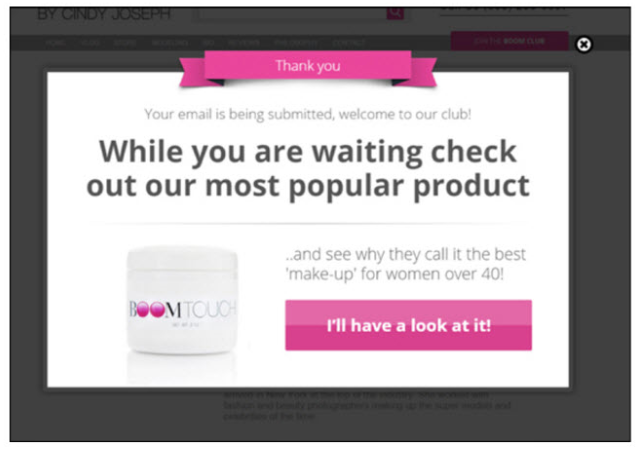
They were able to generate 6,553 new email leads within this 30-day period just by using this one exit-intent offer.
These leads are then added to an automated email sequence with additional content and offers with the intention to turn them into customers.

This Pre-purchase automated email sequence got them a total revenue of $44,817.99 in January.
Note that this not an exit-pop up; it’s an exit intent offer and opens in the same browser window.
Most of the advertising networks do not allow exit-pop up so it always good to use the exit intent offer.
Here are some of the type of messages that BOOM sends out to people who have submitted their email addresses.
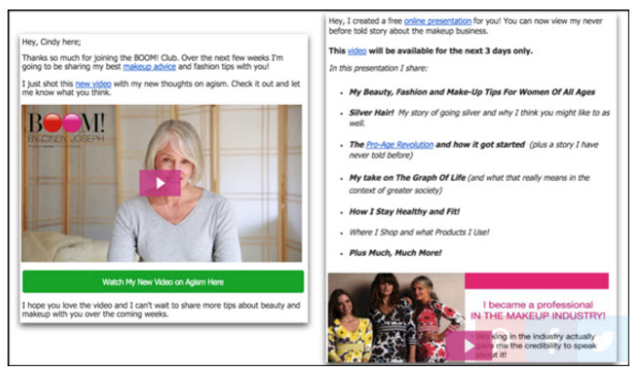
Another key element of this page is Retargeting.
You can send another follow up to people who visited your page but didn’t buy using ads and Dipsy Doodle, generally with another article or video.

Here are some of the ad creative that BOOM is using:

Just the top part of the funnel, that’s included between exit intent and our retargeting produces about 20% of their revenue.
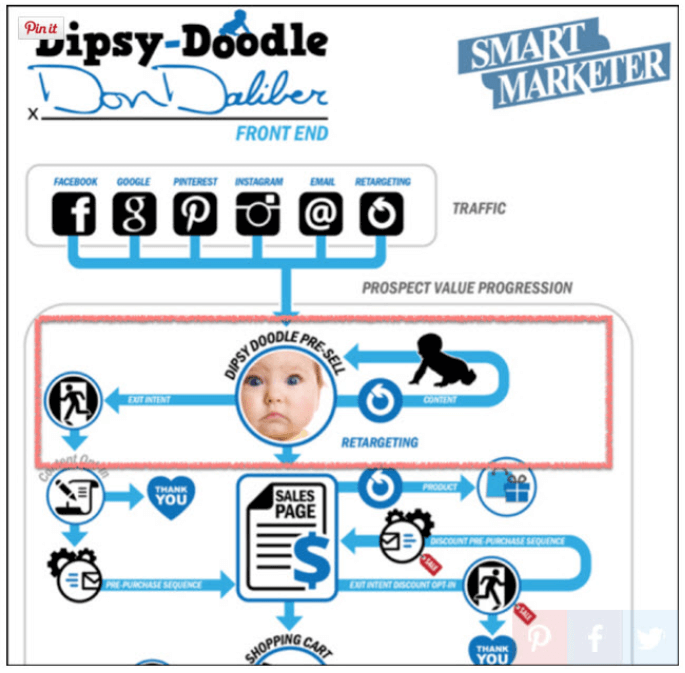
When someone sees their ad, clicks ont it, consumes the content on the pre-sell page and clicks through to their offer, they land on the e-commerce store.
So, you did get the whole picture. Right?
Your offer can be according to your own product.
Since BOOM is an e-commerce store, they send people to the main category page on their store. People can then get the required information about their products and click through to an offer page. They can then add the product to their cart from the product detail page.

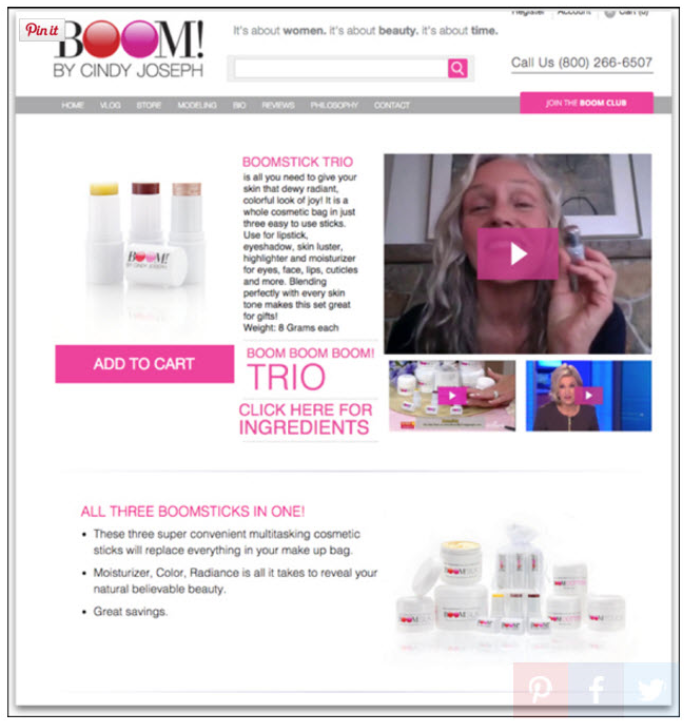

Now, they have the prospect on their shopping cart page and next is the checkout page which is the final “YES” from their side.
Once, they’ve said “yes” and filled in their billing and shipment information, they are officially a customer.

There are a few noticable aspects of this page which will increase your conversion rate on checkout pages.
- They have multiple payment options (PayPal and credit cards)
- They also have an abandon cart email sequence in place.
The abandon cart email sequence is then again a very useful tactic as it stores the entered emails and the items that were in the cart, even if the person doesn’t finish any more of the page.
This way, a follow-up email is sent to the person to communicate with them specifically about the items they were interested in.
Below is an example of how the email looks like:
The first email goes out 4 hours after they abandon.
They ask people to return to their cart and finish their order before they run out of stock.

The next email is sent after 24 hours after they abandon, just as reminder that they hev to complete it.

After 2 days, another email is sent to engage them through content and bring them back to the website.
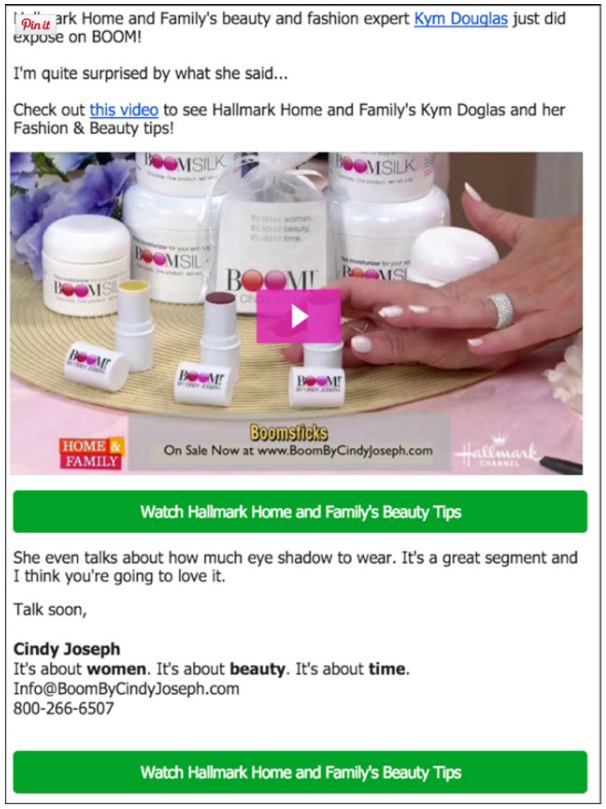
On the fourth day, BOOM starts to begin a discount ladder.
It had been found that people who did not return to the website for 3 days were gone for good so BOOM introduced a discount at the 4 day mark and saw a significant increase in the number of sales from the abandoned carts.
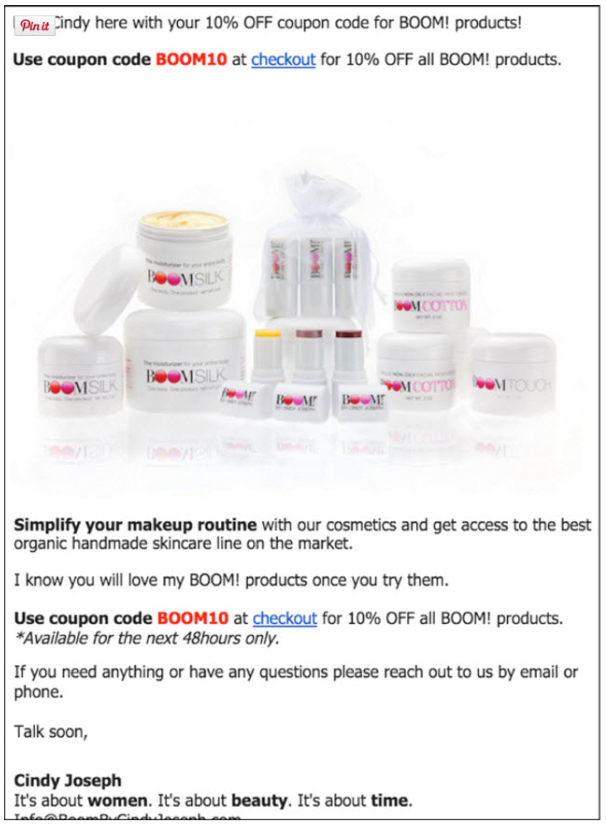
On day 5, another social proof message is sent.
On day 6, a time limit is sent to tell people that the discount opportunity will expire in the next 24 hours.
This time limit tactic works very well.

90% of the revenue from the abandon cart email sequence is made in the first week. After that, a mix of offers and promotions are sent.
Here’s a quick review of where we are so far in our funnel:
- We are running an ad online and someone clicks on it.
- They land on a content engagement page.
- From there, they click though to an offer page.
- On the offer page, they add a product to their cart.
- They go through to the checkout page.
- Finally they complete their order.
Usually, you’d send a thank you note after their purchase but in BOOM does things differently.
BOOM adds an additional set of offers that can be added to a person’s order with a single click of a button.

You can have one or more upsells in your funnels but the main goal of this page must be to increase the initial average order value (AOV). The higher AOV for your store, the more you can spend to acquire customers. By adding this one click upsells to your funnel, you surely can expect an increase in the additional front-end revenue by 15-30%.
Once the customer has seen the upsell sequence, only then are they taken to the post-purchase thank you page.
Here are a few noticable things on BOOM’s purchase thank you page:

- A video thanking customers for their purchase, telling them what to expect and asking to like their Facebook page for more updates.
- A tool called FriendBuy that they use to ask people to share their purchase on social media or through email.

So far, you’ve drawn the attention of your potential audience and made a sale.
The next step steps are to:
- Deliver on what was promised.
- Keep your customer engaged wih relevant content.
- Make additional offers
A good way of presenting this is to have a dynamic and an engaging post-purchase automation sequence. This will add value to your customers and increase your chances of a repeated customer.
Here’s an example of some of the emails that BOOM sends to their customers right after they buy from them:
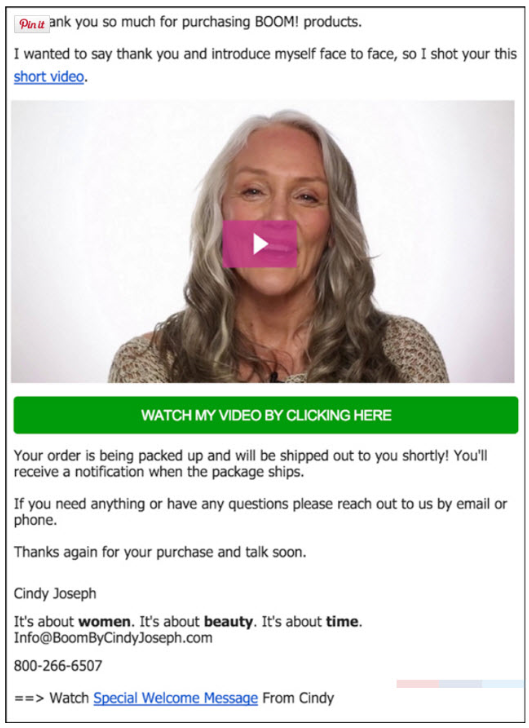
Days 1 – 5
Send a few pre-arrival emails that are designed to build excitement before the product arrives.
Days 6 – 11
• Do a cross-sell sequence.
• Make offers for complementary products.
You can even use a long form video sequence (webinar) to make an offer for a complementary product but these emails are sent only to those people who have not purchased that particular product yet.

Day 12
A social promotion in the form of a selfie request is sent by BOOM. They even announce a giveaway of $100 just by sending a selfie with their product. This increases the rate of conversion when used in offers and promotions.

Day 14
A survey form request is sent by BOOM in which they make sure to add a comment box with each question to get the feedback of their customers and take notes of any suggestions they might have. This gives BOOM the insight ideas for new products or improvements.
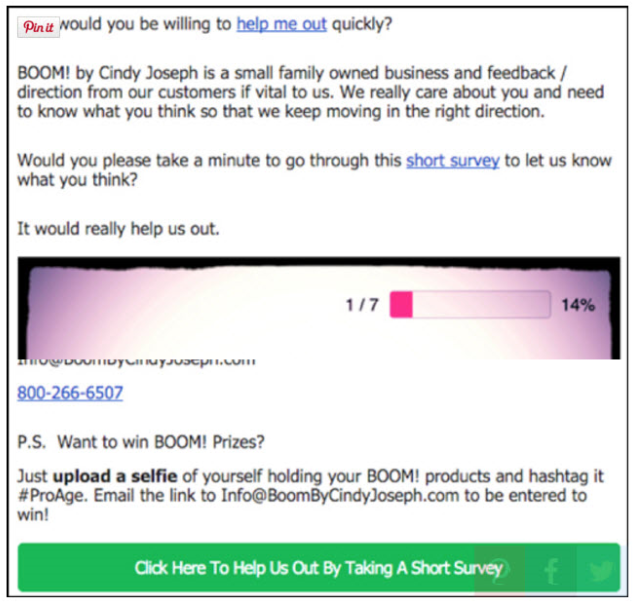
Day 16
A video review email is sent containing some incentives to encourage people.

Over the years, POW has done analysis and figured out when people people are most likely purchase again and what is going to be their next purchase based on the previous one.
Here’s an example of how BOOM does it.
If someone orders a BOOMSTICK color from them, they are most likely to order another BOOMSTICK color within 30 days. On the other hadn, if someone does not place another order in 40 days, an automated email sequence is sent to trigger people to make a purchase by making offers.
Someone who does not purchase anything again within 60 days, is put on a discount ladder by BOOM to begin making them offers to come back and buy.

Funnel Page Features
Now, we’ll show you some of the examples from BOOM’s Store Page, Product Page, Shopping Cart pages that we recommend everyone should use.
This is how they do it:
Another exit intent offer but this one is with an incentive saying, “Hey, give us your email address and we’ll give you 10% off on your order right now.”
Once they are on the Dipsy Doodle pre-sell, BOOM makes a content opt in offer there.
Pop Up:

Pop Up Thankyou:

From this coupon, BOOM generated $249,000 in January.

Next, they use ads to retarget who had previously visited their pages.
POW has found it to be more effective when retargeting with content instead of product-specific ads.
Let’s discuss a few more noticable points from BOOM’s offer page as this is the most important page in the funnel because this is where people make a decision to whether buy it or not.
It’s where you turn prospects into customers.
Here are a few conversion features that BOOM uses:
- A hero shot of the product
- A product description
- Product sales video
Some people prefer to look, some like to watch and others to read. So, all the media formats are catered.
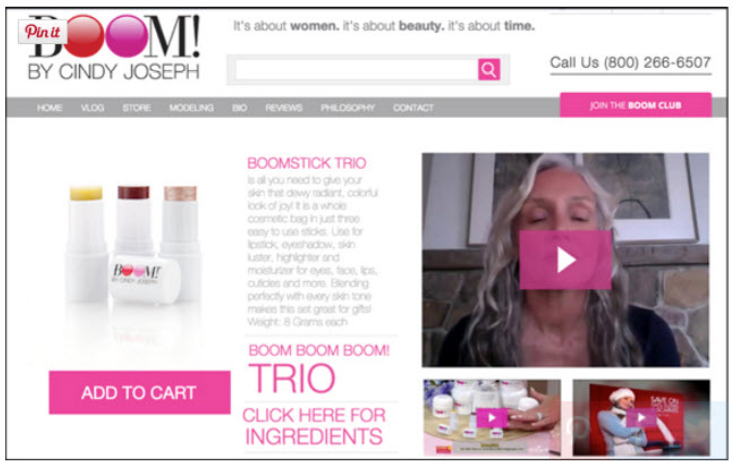
- Under the product video, you’ll see BOOM adds some more PR pieces about their product/brand that they call “third party pitch videos”. These third party pitch videos have proven to be an excellent form of social proof.
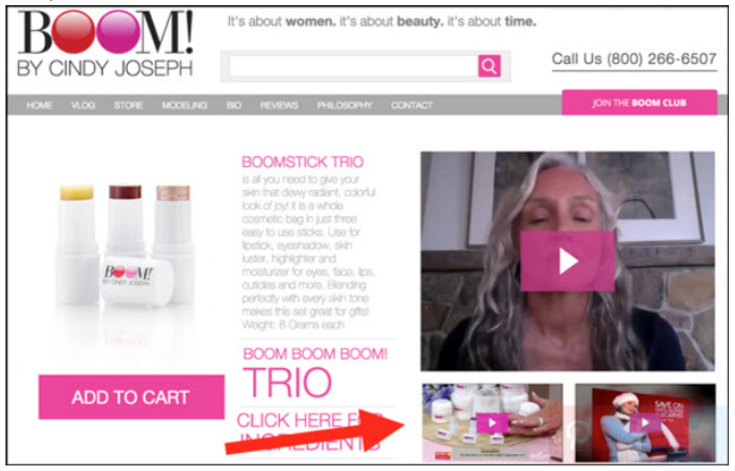
- As you scroll down, you’ll see they have a long form left-right content but there’s also a call-to-action at the bottom so the prospects won’t have to scroll back up to click add to cart.

- Next, they have a section where they include customer testimonial videos. They send out gift certificate to the previous customers in exchange for a video review of the product.
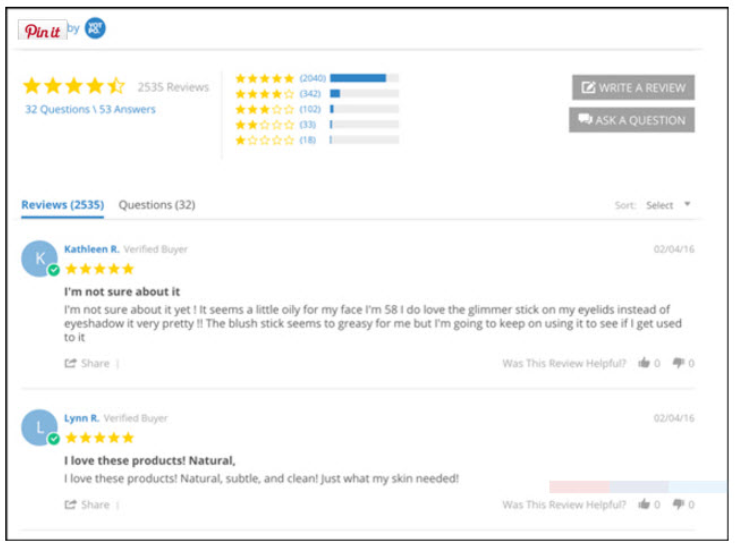
- They have a cross-sell section where they offer additional products.
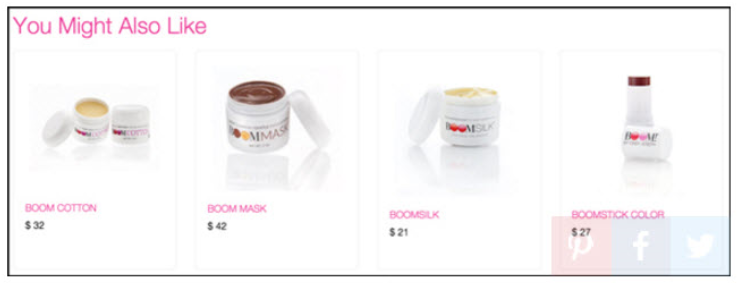
THERE YOU HAVE IT!!!
We hope this article had given you a better understanding of how can you generate over $1 million a month.
POW suggests that you absorb as much of this as possible and use these tactics in your own business.


